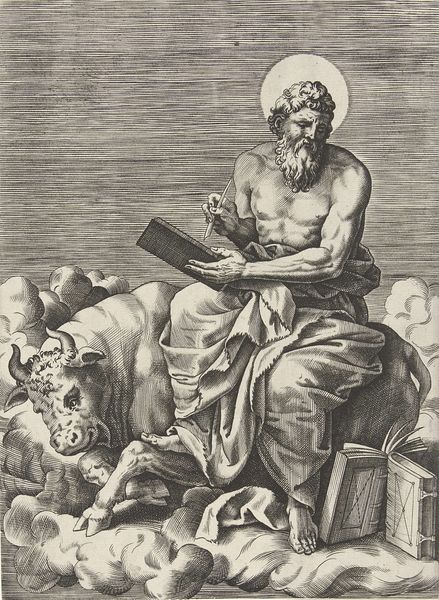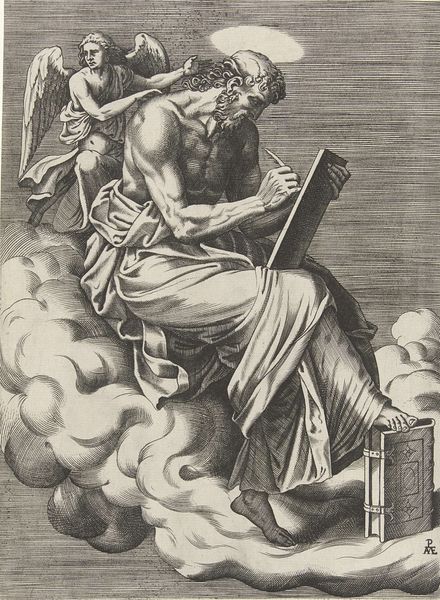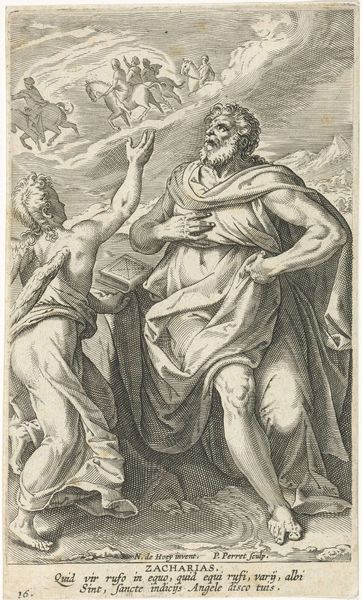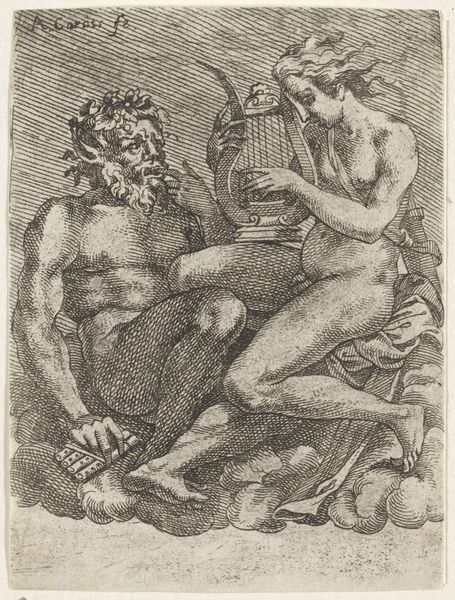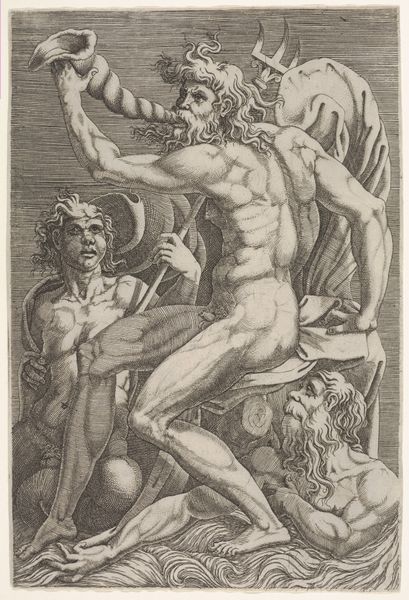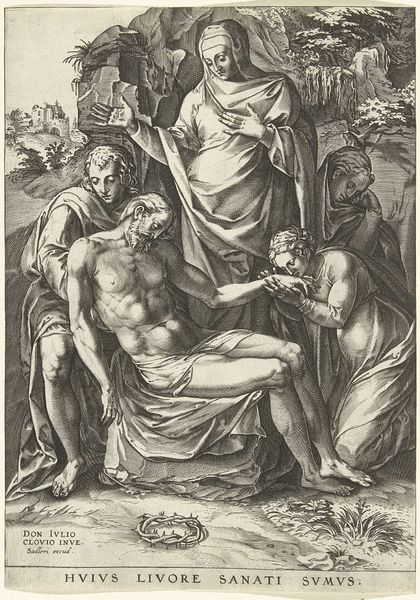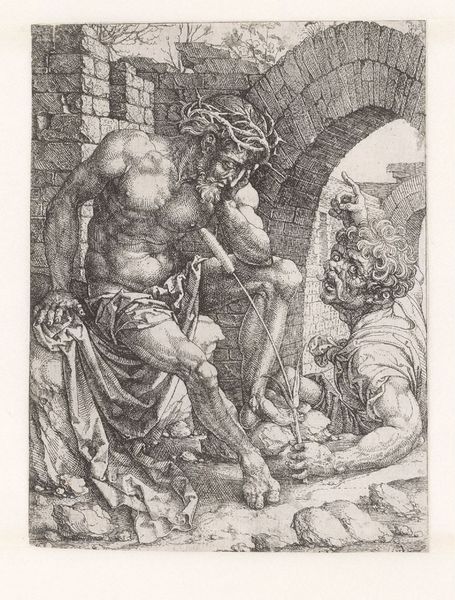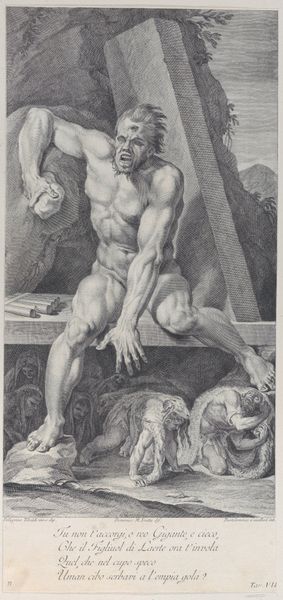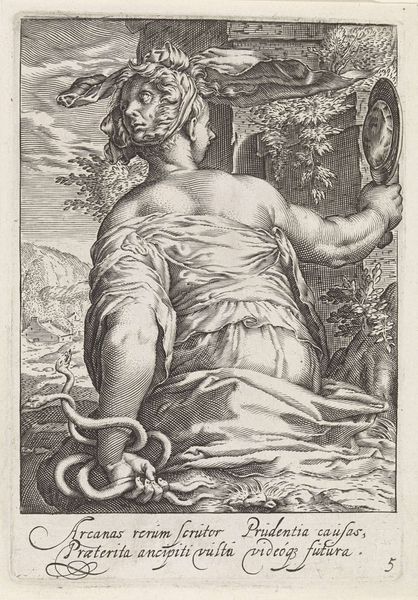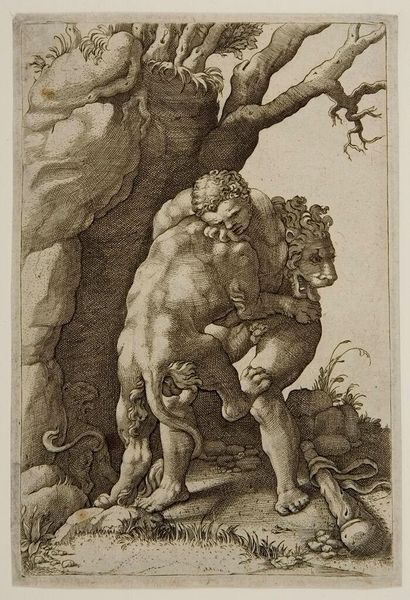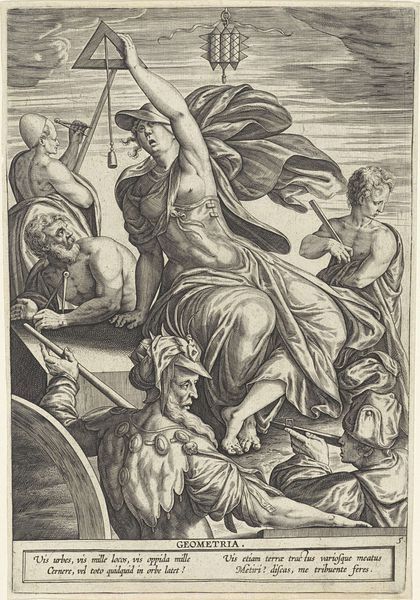
print, engraving
#
portrait
# print
#
figuration
#
11_renaissance
#
line
#
history-painting
#
northern-renaissance
#
engraving
Dimensions: height 203 mm, width 149 mm
Copyright: Rijks Museum: Open Domain
This is Pieter van der Heyden's "Marcus de evangelist," an engraving made sometime before 1569. Engraving is an intaglio process. The artist uses a tool called a burin to manually cut lines into a metal plate. The incised lines are filled with ink, and the plate is pressed against a sheet of paper, transferring the image. Look closely and you can see how the composition emerges from a network of precisely placed marks. Consider the labor involved; the sheer amount of time it must have taken to create the image, and the high level of skill required to control the burin. The lines vary in thickness and depth, creating a sense of light and shadow, and lending the figure of Saint Mark a powerful, sculptural presence. The printmaking process allowed for the wide distribution of images, making art more accessible in society. Van der Heyden’s technical virtuosity elevates the status of printmaking, demonstrating its potential for artistic expression, and challenging distinctions between original art and reproduction.
Comments
No comments
Be the first to comment and join the conversation on the ultimate creative platform.
